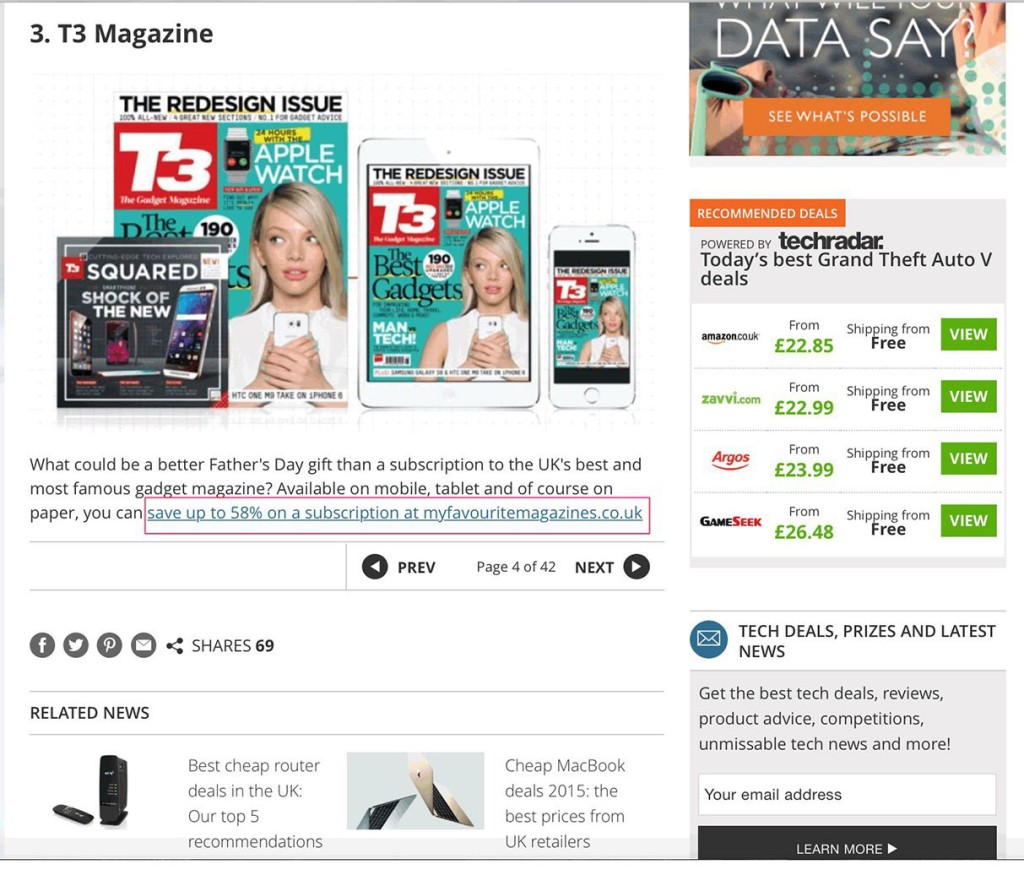One of the reasons there is so much great content available for free on the Internet is because retailers and other businesses will pay the owners of websites to feature them on their web pages.
Websites offer online advertising spaces, on their web pages, to these retailers in the same way that newspapers and commercial TV stations do.
My website makes money from online advertising, and the information you’re reading explains how some or all of the products, pages and/or clickable links may result in the website receiving payment for featuring goods and services.
The payments contribute towards the cost of running the site meaning I can continue producing useful content to help you get the most out of your travel experiences.
This is known as affiliate marketing, and involves TravelTheGlobe4Less entering into business relationships with retailers, who will reward TravelTheGlobe4Less for promoting them.
This usually happens when a customer clicks a link on the TravelTheGlobe4Less website, which takes them to a retailer’s website where they make a purchase. The payment received by TravelTheGlobe4Less is typically a commission payment for the completed sale.
These payments are generally a small percentage of the price paid, and TravelTheGlobe4Less’s affiliate marketing policy is to:
- only ever link to companies that the founders of TravelTheGlobe4Less personally use
- never promote products or services which the founders of TravelTheGlobe4Less would not personally use
- Focus first and foremost on the content and not any affiliate marketing opportunity
- help our readers get more for their money and experience fulfilling travel adventures
In affiliate marketing, monetised online content can take many forms, but here are examples of the two methods this site uses:
The first is to embed links in text or articles on the website. These links redirect you to partner websites, where a commercial relationship may exist.
In this example from www.techradar.com the link highlighted in the pink box is a monetised text link.

The second example of affiliate marketing are ‘banner adverts’ that you see throughout the Internet. In the example below from a blog called Style My House you can see an ad outlined in the pink box on the left hand side of the homepage of this website dedicated to interior design.
Here the publisher features a wide selection of content all about interior design and has chosen a relevant banner advert to place on this page. The ad will remain the same until John Lewis or the publisher decide to change it.
 Affiliate Marketing Networks
Affiliate Marketing Networks
If a user clicks on affiliate marketing advertising and that click results in a sale the website owner will usually receive a commission payment for driving that sale. This journey is normally recorded by an intermediary company, called an Affiliate Network.
The affiliate network facilitates the relationship between the website and advertiser. It owns and runs the technology that manages the links and banners that website owners place on their pages. Any sales that result from consumers clicking on those links are then tracked and recorded by the advertiser with the network providing details of which websites generated those sales.
None of the advertising served by affiliate marketing captures personal data relating to an online user unless that data is specifically requested and entered by the consumer, such as an enquiry for double glazing or a holiday brochure.
There are many different types of websites that make use of affiliate marketing to monetise their content. If you are concerned about how affiliate marketing is being used on a website that you have visited please CONTACT US.
You can read more about affiliate marketing and how different companies use it to make money here.
 From Miles to Smiles Stylish travel for professionals seeking luxury at affordable prices
From Miles to Smiles Stylish travel for professionals seeking luxury at affordable prices
